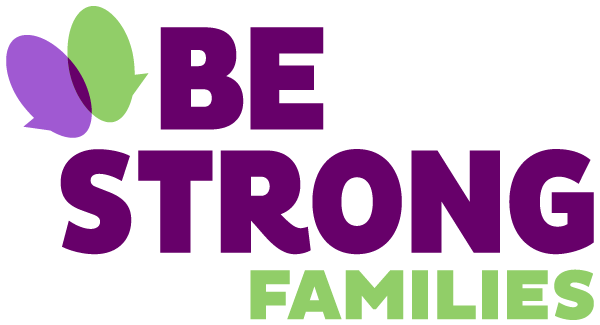Gratitude and Blessings
By: Dena Chapman
Some time ago, I saw the title of a magazine article captioned, “Happy New Year, Happy New You!” That title had me feeling some kinda way; enter eye roll and heavy sigh. Dreading taking a personal inventory of my imperfections. Anxious over the thought of all the boxes I left unchecked in the past year—another failed attempt at that timeless American tradition of setting New Year’s resolutions. If you’re considering doing away with the whole New Year’s resolutions thingy, just know that you have options—read on!
The ushering in of a new year, traditionally means the intentional setting of New Years’ resolutions. We are creatures of habit; for many of us, traditions and rituals are deeply embedded habits we practice, sometimes without even thinking about their significance or impact upon our lives. Every year about this time of the month, we resurrect what I call our “New Year’s-resolution-zombie”; we begin to conjure up goals we hope to attain in the coming new year and often those goals are ones we’ve previously failed to make good on. Time management firm Franklin Covey conducted a survey with 15,000 customers to determine how successful people were at honoring their New Year’s resolutions. Results revealed that about 1/3 of goal setters abandon their goal by the end of January and more than half of New Year’s resolution goal setters abandon their goals altogether. Why? We place a lot of emphasis on changing behavior and as the saying goes, old habits die hard. Unfortunately, the feelings of angst, anxiety and disappointment from failure of not achieving our New Year’s resolution doesn’t die as easily. Yet still, we continue to indulge in the practice of setting resolutions year after year without yielding a good return on a happy new year, much less a happy new you.
What if we were to re-imagine our reflection of the year in review and instead focus on the here and now. What if, we put to rest the ritual of New Year’s resolutions (changing behavior) and instead, implement a practice that would have us invite joy into our life? Let us consider the joy of simple gratitude and abundant blessings. Dr. Robert A. Emmons is a world-renowned psychologist and leading scientific expert in the study of gratitude and its benefits. According to Dr. Emmons, consistently practicing simple gratitude has positive effects on physical health, psychological well-being and our social relationships. Click here to learn the specific impact of gratitude practice on health and well-being. Improving our physical health, psychological well-being and social relationships is something we can all appreciate. Cultivating a daily practice of simple gratitude is a fairly simple thing to do, it just requires discipline and an open mind. Here are three simple ways to incorporate the art of expressing gratitude:
Keep a Gratitude Journal—this idea has been popular for a very long time, however, there are some key things to keep in mind in order to reap the best benefits from your gratitude journal. First up is making a conscious decision to invite joy and gratitude into your life. This important first step sets the tone for your journal experience; you want this experience to be something you look forward to rather than dread. Next, decide the parameters for your gratitude journal. Will you write once a week or three times weekly? Experts in the field suggest weekly journaling over daily journaling is more effective – you can become immune to gratitude. How many gratitude nuggets will you identify in your weekly writing practice? This step prepares you to be disciplined in your writing. And finally, remember that journaling is a reflective process, so you’ll want to go deep in expressing your gratitude as opposed to just listing or skimming the surface for what ranks as gratitude in your life. You may even write why you’re grateful for the nuggets you identify—i.e. what would your life be like without him/her/it?
Create a Gratitude Jar—for obvious reasons, this idea is similar to the gratitude journal, but there are also some noteworthy distinctions to consider. With the gratitude jar, you will want to focus on one “nugget” of gratitude for each day. We all have tough days and some days it may be challenging to find the rainbow; that’s the beauty of the gratitude jar, it will challenge you to stretch, reach, push through! Write down what you’re grateful/thankful for on a slip of paper: “Today, I am grateful/thankful for _____________ because ___________ “and place it in your jar. At the end of the year you have a tangible reminder of all of your blessings. You can choose to share your blessings with someone else or relish in your gifts alone. Either way, your life will be forever transformed by the discovery of your abundant life.
Create a Gratitude Scrapbook—there is a saying that a picture is worth a thousand words. From pictures we craft memories and create stories that can heal and transform our lives. Consider all of the pictures that you either have in print or stored on your cell phone. Print select pictures and create a gratitude scrapbook. As you look at that phot, what gratitude surfaces for you? You can audio record your synopsis of gratitude or you can write your gratitude nugget beneath the photo in your scrapbook. Either way, you have a vivid, colorful expression of gratitude.
As we prepare for the New Year 2020, I challenge you and your family to practice the art of expressing simple gratitude and abundant blessings in this new year. In 1965, Jackie DeShannon recorded, What the World Needs Now is Love—54 years later, that sentiment could not be truer…When we practice gratitude, we are living out love; we are bringing balance and vitality into focus. Instead of resurrecting dead resolutions, let us resolve to live in a space of gratitude and abundant blessings! From our family to yours,
HAPPY NEW YEAR!!!

